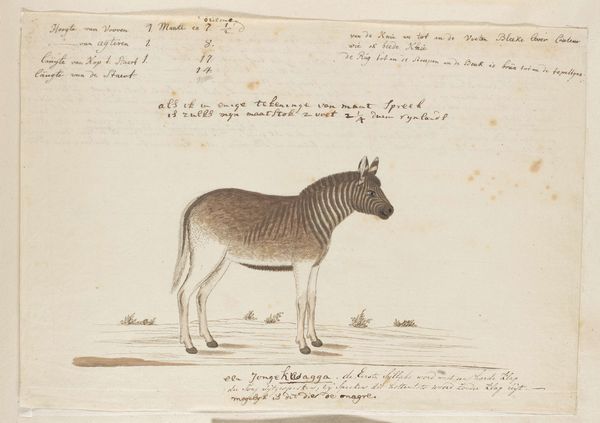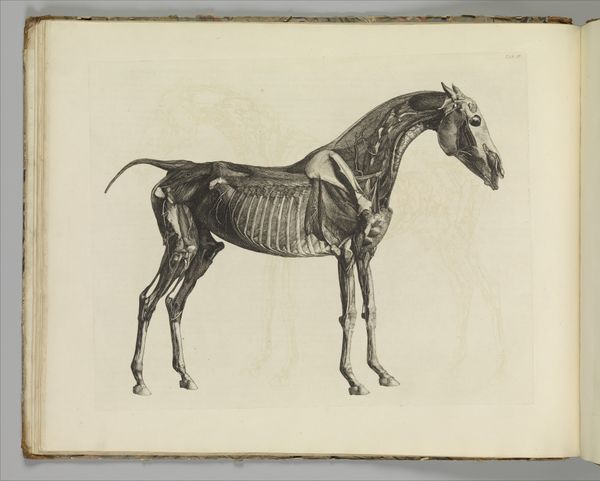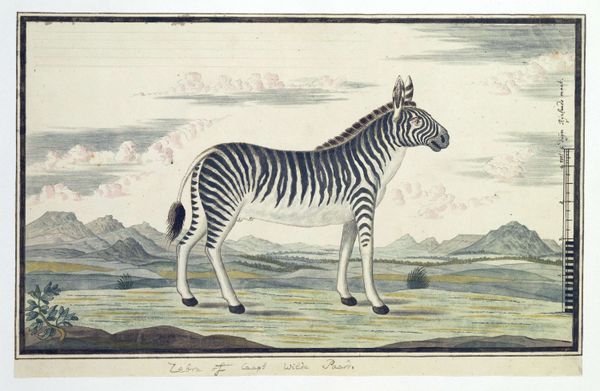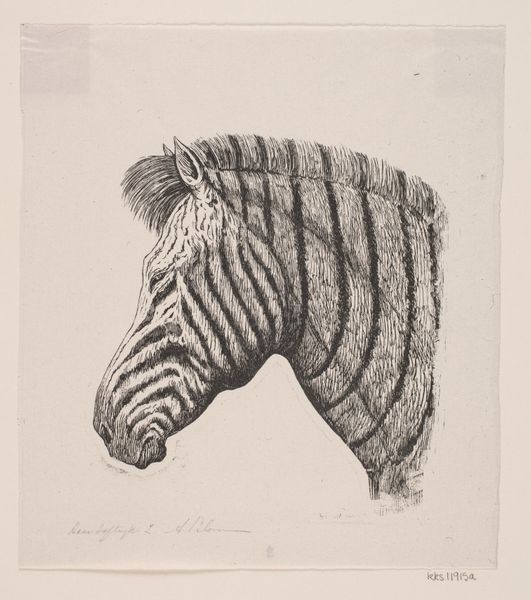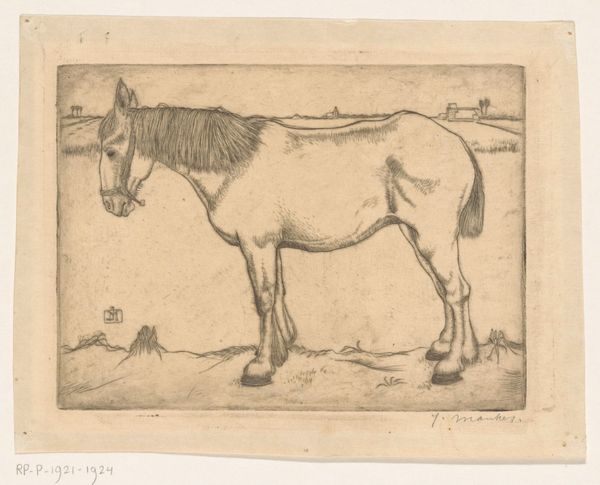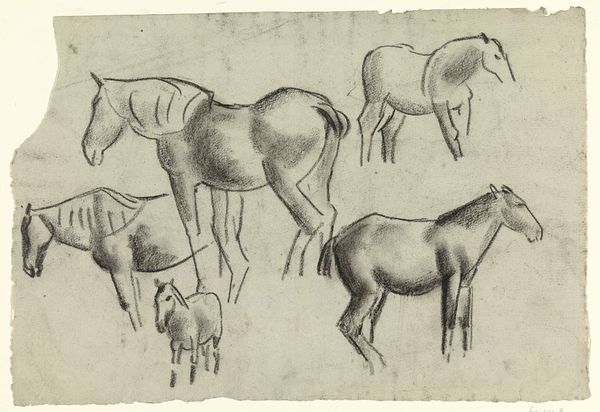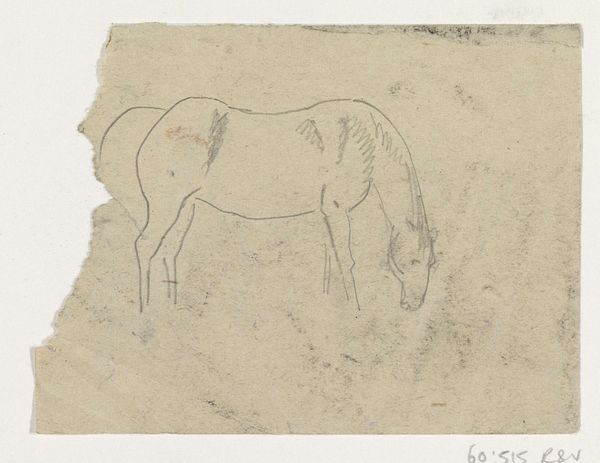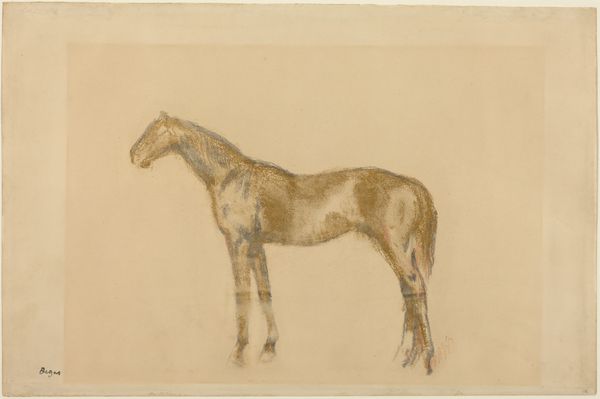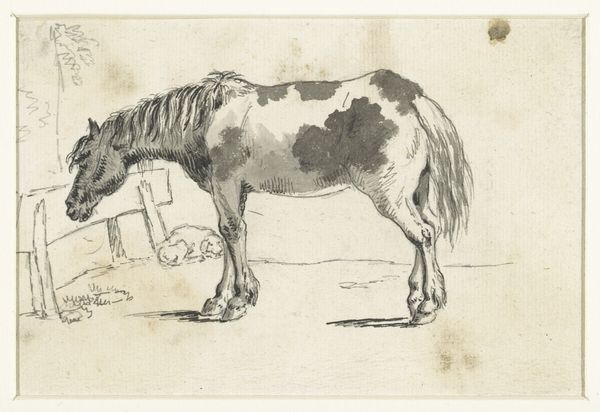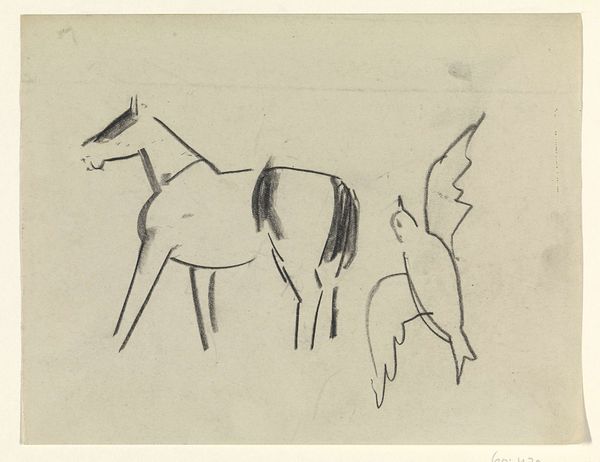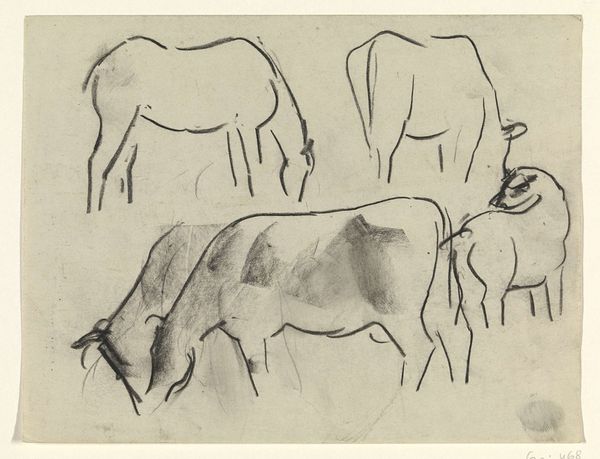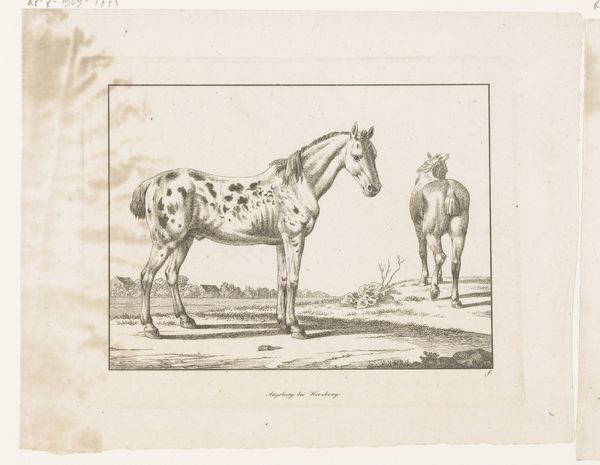
drawing, paper, ink
#
drawing
#
figuration
#
paper
#
ink
#
coloured pencil
#
line
Dimensions: height 660 mm, width 480 mm, height 161 mm, width 301 mm, height mm, width mm
Copyright: Rijks Museum: Open Domain
Curator: Looking at this, I'm immediately struck by a sense of primal recognition, a kind of echo from the very beginnings of visual expression. It reminds me of early cave paintings, but with a deliberate, perhaps even scientific eye. Editor: Precisely. We're examining a piece entitled "Copies after San rock-paintings of two animals," a drawing possibly from 1777, credited to Robert Jacob Gordon. It's rendered in ink, likely with coloured pencil, on paper, depicting a sable antelope and a zebra. Gordon, during his time in South Africa, documented the local flora, fauna, and peoples. This work stands as both art and cultural record. Curator: The animals are drawn with such economy of line. Yet, the zebra, especially, it is so immediately recognizable, it carries the archetypal symbol of the "zebra". How do you think it informed European sensibilities of Africa at that time? Editor: These weren’t casual sketches. Gordon worked for the Dutch East India Company. The paintings speak to both observation and dominion. Consider how images of flora and fauna from colonized lands became a kind of cultural capital, informing scientific discourse and shaping European perceptions. Curator: So it served to familiarize and to control... It's fascinating to see how ancient San art traditions become filtered through a European lens. Did these images get circulated publicly? How did Europeans come into contact with the African rock art? Editor: Dissemination would have been relatively limited, given the technology of the day. Gordon's work primarily served scientific and administrative purposes within the company, not as art available for a broad public to engage. And what’s really important is considering that Robert Jacob Gordon does not consider this as Art but more as ethnographical data. Curator: Ah, so this image reflects cultural assumptions but might not yet signify aesthetic judgments. I still see this transfer and representation through European eyes and consider them fraught and crucial to understand today, which says a lot about our institutions and the way history is recorded. Editor: Yes, and in contemplating these echoes across time and cultures we can see not just shifts in artistic styles, but changing relationships between human perception and the animal world, of image-making as it crosses cultures. Curator: I concur, thinking about visual memory and symbolic power is paramount here. Editor: Precisely.
Comments
No comments
Be the first to comment and join the conversation on the ultimate creative platform.

